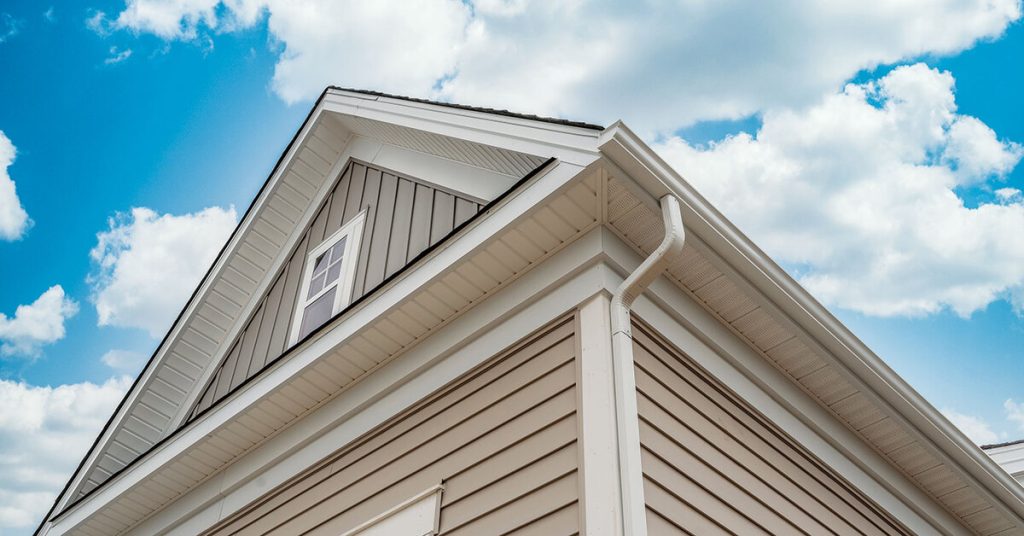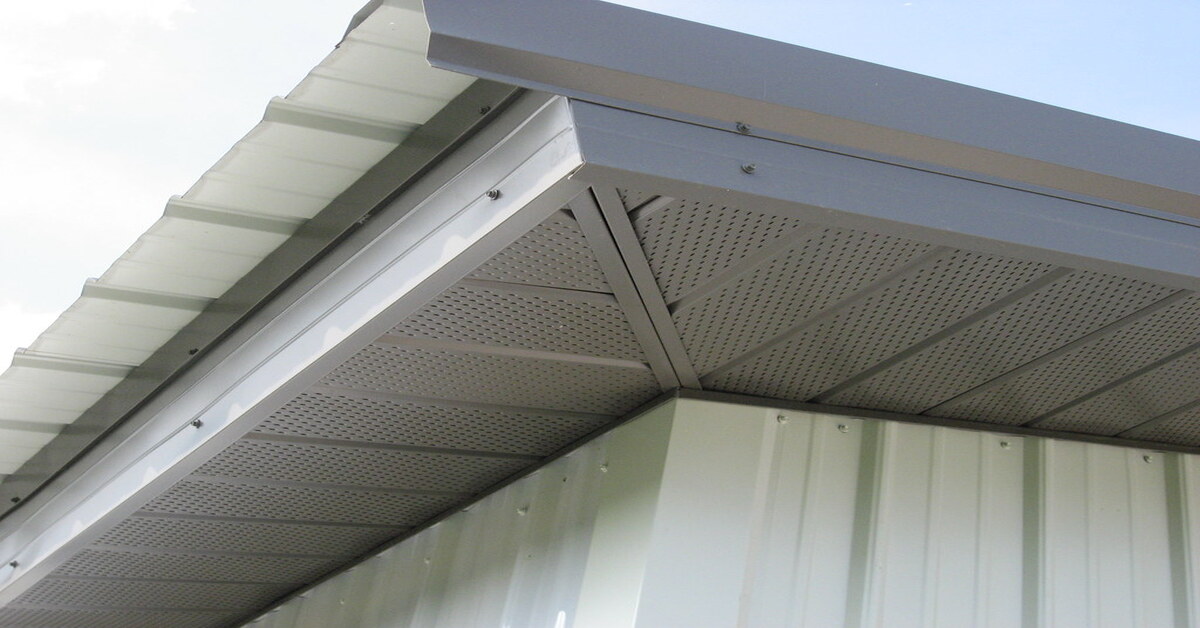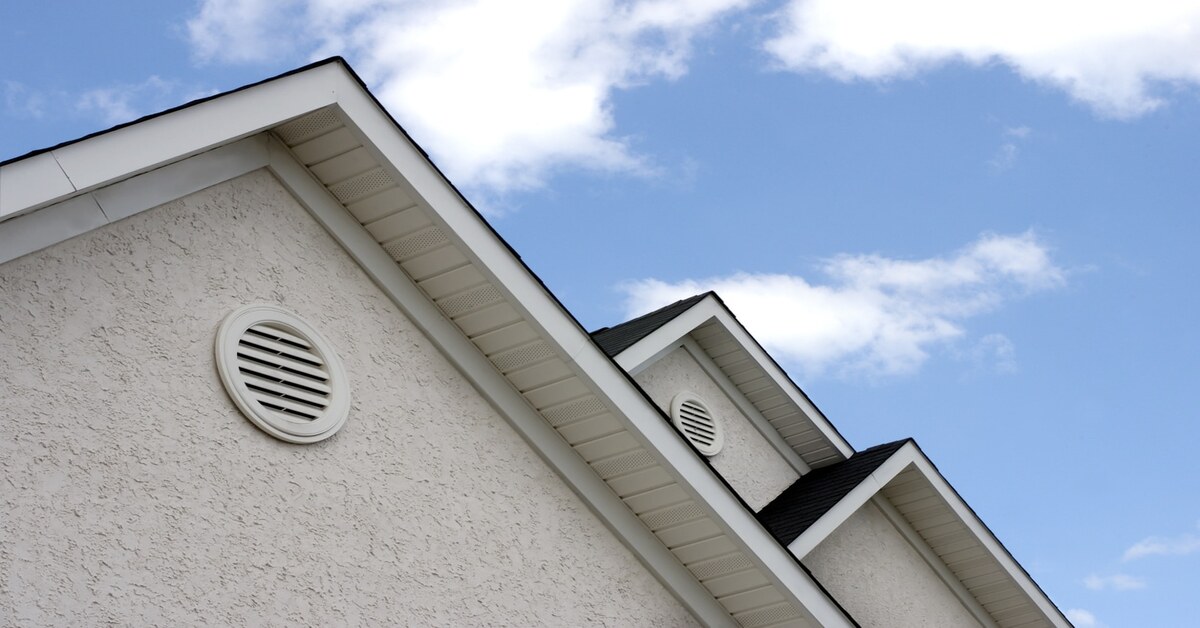

Proper ventilation is critical to maintaining a healthy and comfortable living environment within buildings. The soffit vent ensures adequate airflow and regulates temperature within attics and enclosed spaces.
Ventilation in buildings holds immense importance. Without adequate airflow, attics and enclosed spaces can become susceptible to numerous issues, ranging from excessive heat buildup to moisture buildup.
This article explains the purpose of a soffit vent and how it benefits a home’s well-being.
What is a Soffit Vent?
A soffit vent, sometimes known as an eave vent, is a major part of ventilation systems. They are ventilation components installed in the soffit area of a building’s roof.
The soffit is the bottom part of the roof’s overhang. It creates a closed area between the outside wall and the roof’s edge. Roof vents let fresh air into the attic, helping to keep the building well-ventilated.
The outside air mixes with indoor air in the attic. This mixing helps to transfer heat, moisture, and pollutants. This process helps to regulate the temperature and humidity levels in the attic. Soffit vents stop the buildup of excess heat and moisture that could lead to problems like condensation, mold growth, and structural damage.
Types of Soffit Vents
There are two main types of soffit vents used in homes. If your existing soffits are at the end of their life, it might be time to think about a replacement.
Here are the two types of soffit vents and how they contribute to a roofing system.
Continuous Soffit Vents
Continuous soffit vents are long, continuous openings that run along the entire length of the soffit. These vents provide a larger area for air intake.
They are typically installed as a continuous strip or grille. This offers a consistent flow of fresh air into the attic or roof space. Continuous soffit vents are commonly used in newer construction, as they are more efficient when it comes to roof ventilation.

Individual Soffit Vents
Individual soffit vents, or discrete soffit vents, are individual vent units spaced at regular intervals along the soffit area.
They come in various shapes, like circular or rectangular, and are installed along the roof eaves. Individual soffit vents are suitable for new construction projects and for fitting on existing buildings. They offer a more traditional and aesthetic appearance but still provide sufficient airflow.
Both types of soffit vents serve the same purpose. They help fresh outdoor air enter the attic or roof space. This promotes proper ventilation and prevents issues related to heat and moisture buildup.
Benefits of Proper Soffit Ventilation
Proper soffit ventilation has many benefits that contribute to the overall health, comfort, and longevity of a building. Let’s look at some of the key advantages.
Temperature Regulation
Soffit vents allow fresh outdoor air to flow into a roof space, which helps regulate the temperature inside the building.
By allowing hot air to escape, especially during warm months, soffit vents prevent the attic from becoming too hot. It maintains a more comfortable indoor environment in your home.
Moisture Control
Proper ventilation is essential for controlling moisture levels in the attic. Soffit vents help release humid air and prevent the buildup of condensation. This helps to reduce the risk of mold, mildew, and rot, which can lead to costly damage and health issues.
Energy Efficiency
Proper soffit ventilation improves the overall energy efficiency of a building. Reducing heat buildup in the attic means less strain on air conditioning systems during hot weather.
In colder months, proper ventilation helps prevent the formation of ice dams, which can lead to roof damage and energy loss.
Extended Roof Lifespan
By minimizing temperature fluctuations and moisture-related problems, soffit ventilation helps extend the lifespan of roofing materials.
Roofing components, like shingles and wooden structures, last longer when exposed to a well-ventilated environment.
Improved Indoor Air Quality
Effective ventilation ensures the continuous flow of fresh air, removing stale air and pollutants from the attic and living spaces. This contributes to improved indoor air quality and a healthier environment for homeowners.
Enhanced Structural Integrity
Excess heat and moisture can weaken a building’s structure. The risk to a roof’s framing is far less with proper soffit ventilation. By installing roof soffits, it ensures the overall stability and safety of the structure.

6 Tips for Maintaining Soffit Vents
If you already have soffits installed on your roof, it’s essential to regularly maintain them to prevent mold buildup or blockage. Here are six tips to looking after your soffit vents:
Regular Inspection: Inspect the soffit vents to ensure they are in good condition and free from damage or blockages.
- Clear Debris: Clear any debris, dust, or cobwebs that may be on the vents. A gentle brush or vacuum can clean the vent openings without damaging your roof.
- Check for Blockages: Inspect the roof space to check there are no airflow blockages from the soffit vents.
- Repair or Replace Damaged Vents: If any soffit vents are not functioning properly, repair or replace them to maintain proper ventilation.
- Monitor Attic Conditions: Keep an eye on the attic’s temperature and humidity levels. If you notice excessive moisture, it may show a ventilation issue that you should address.
- Professional Maintenance: Consider seeking professional help for regular inspections and maintenance, especially for harder-to-reach areas or complex roof systems.
Factors to Consider for Soffit Ventilation
Getting ready to start a soffit installation? Adapting yo ur roofing system can be complicated, and it’s necessary to consider the size and shape of your roof.
Here are the factors you should consider prior to a soffit installation:
Building Size and Design: The size and layout of your home will influence its ventilation needs. For instance, larger buildings need more soffit vents for proper airflow throughout the attic space.
- Climate and Weather Conditions: Consider your home’s location and climate. In hot and humid climates, proper ventilation is essential to prevent heat buildup and dampness.
- Roof Pitch and Slope: The pitch and slope of the roof will affect the airflow within the attic. Steeper roofs may have naturally better ventilation than flatter roofs. However, you may need more vents for optimal airflow.
Improve Your Roof’s Ventilation Today
Proper ventilation helps regulate the temperature in the attic or roof space. In hot climates, it allows warm air to escape, preventing the attic from becoming excessively hot. This is especially important in Australia, where temperatures can reach 30 degrees Celsius.
Roof soffits aren’t the only way to improve ventilation in your home. For instance, RapidRidge is a dry fixed roofing system that allows for natural cooling throughout your home.
Use a combination of roof soffits and natural cooling to improve your home’s ventilation today.
